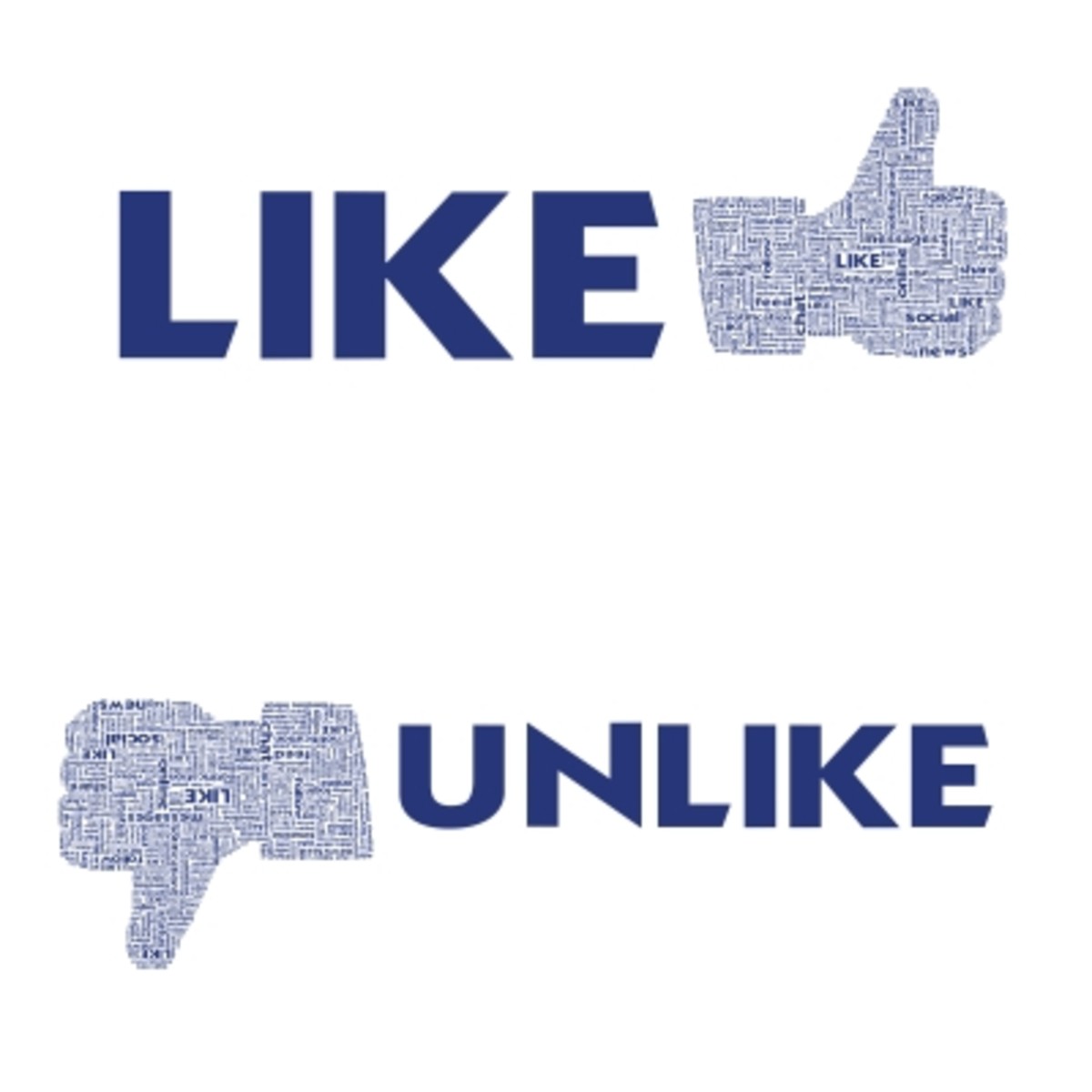Using Social Technologies to Enhance Brand Image
Brand Image is Key

The Size and Power of Social Technology
Social technologies have revolutionized the business world. From an advertising perspective, the money generated from social media is and the growth associated is incredible. As an industry leader, Facebook is estimated to rack in about $1.2 to $1.4 billion in ad revenue, which is up from $700 million in 2009 (Eldon, 2010). According to MarketingWeek, social media is threatening TV advertisements as it has the potential to “steal” budget money away from television (Parsons, 2010). In terms of the population on social networking sites, there are: 500 million Facebook users, 32 million Flickr users, 120 million Window’s Live Spaces users, 130 million MySpace users, and 80 million LinkedIn users (Wikipedia, 2010). To put this in perspective, the number of registered users on Facebook is nearly equal to the entire of population of the North American continent. On average, people throughout the world spend one out of every four and a half minutes on a social network or blog (The Nielsen Company, 2010).
But this is not the point. Social technologies, and not just social networking sites, are impacting the business world way beyond issues of ad revenue and user counts; they are impacting the brand image of companies across the world. The big deal about this is that a company’s brand image can be changed, literally, overnight. From Wal-Mart to BP to the local restaurant in town, the impact of social technologies on brand image is being felt the world over.
TSA Incident


One of the YouTube videos of the TSA/Tyner confrontation recorded on Tyner's cell phone
Social Technology Case Study
There are numerous examples of business situations which have gone “viral”. One of the most recent examples of the effect that social technologies can have on a brand name of an organization is the very controversial TSA (Transportation Security Administration) incident with the now “famous” John Tyner, who refused a pat-down at a security check point in the San Diego International Airport. The incident took place on Saturday, November 13th. Within five days, roughly 100 YouTube videos on the incident had been published and the full length video which was taken from Tyner’s cell phone had received nearly 60,000 views.
Thousands of news stories and blog posts were also released launching nothing short of a national debate over the TSA’s new screening policies. Even t-shirts were being sold online designed with Tyner’s now catchphrase response to the TSA agent of “don’t touch my junk” (Edgecomb, 2010). Today, more than ever, new social technologies have a power to distribute information at exponential rates. Videos posted on You Tube and blogs give individuals the ability to be up close and personal to any situation like never before.
Groundswell: A Must Read

The Groundswell
The TSA may not be a business entity, but the principle still remains. Social technologies can change the image of a brand very quickly. Throughout the remainder of this text, I am going to share some insights from a great book titled, Groundswell , coupled with some of my own personal thoughts. Groundswell was published in 2008 by Harvard Business Press and authored by two leaders at Forrester Research. The subtitle of the book, “winning in a world transformed by social technologies”, really gives away much of the book’s content. It is designed to help business leaders understand the evolving dynamics of social technology that are constantly challenging businessmen and women worldwide. The purpose of this review is to outline some of the key highlights of the book and in particular, discuss best practices that can help businesses conquer the world of social technology.
Blogging: One Form of Social Technology

Defining the Groundswell and Identifying Social Technologies
First it is necessary to identify some of types of social technologies. The book defines groundswell as being “A social trend in which people use technologies to get the things they need from each other, rather than from traditional institutions like corporations” (Li & Bernoff, 2008, p. 9). According to Groundswell , Technologies that make up the groundswell include:
- Blogs and other user-generated content (E.g.,: Wordpress.com)
- Social networks and virtual worlds (E.g.,: MySpace)
- Wikis and other open source generated content (E.g.,: Wikipedia)
- Online forums, reviews, and ratings (E.g.,: Movie reviews)
- Tags (E.g.,: Del.icio.us)
- and RSS and widgets (E.g., FeedBurner)
Social technologies make people think primarily of networking sites like Facebook and MySpace, but in reality, there is so much more the groundswell.
Co-Author of Groundswell talks with the CEO of Communispace, a company that creates "online communities"
Best Practices for Using Social Technologies
The power of social technologies is unabatedly real, but what can business leaders do about it and how can they enhance the image of their brand.
Evaluating New Technologies
One of the first best practices which the book discusses is the evaluation of new social technologies. Lots of time, effort, and money can be invested into different social technologies and it is important to make sure that any investment made toward “getting into” a social technology is a reasonable one. Using the groundswell technology test, useful information can be revealed by asking five questions about any particular social technology which is being evaluated. These questions as presented by the book are:
- “Does it enable people to connect with each other in new ways?”
- If the answer is yes, then there is potential for rapid growth.
- “Is it effortless to sign up for?”
- If no, be careful because most successful groundswell technologies are free and easy to setup.
- “Does it shift power from institutions to people?”
- Social technologies that support the power of communities are less likely to fail.
- “Does the community generate enough content to sustain itself?”
- People must be able to easily add content.
- And “Is it an open platform that invites partnerships?”
- Open technologies invite innovation and development (Li & Bernoff, pp. 36-37).
Answering these questions can help in the decision making process of what social technologies should be chased after and which ones shouldn’t be touched.
Listening to the Groundswell
Social Technologies are always right. While the information collected and posted within the groundswell may or may not be accurate, it is always right. The image of a brand is no longer in the sole control of the owner or manager of that brand; the image is decided by the groundswell. What this means is that while a business manager may have a certain idea of how customers and the public interpret his brand, the real brand image is what people say it is. To listen to the groundswell is to listen to customers, listen to their needs, wants, desires, feedback, and other “stuff” that companies pay millions of dollars to marketing research firms for. There is so much information that can be revealed if companies are just willing to listen.
Strategies for listening can be very simple such as doing a Google search of the brand name with an adjective like awful, amazing, or bad. For example, typing “Google terrible” in Google’s search engine, gives this as one of the top results: “The new Google Keyword Tool is Terrible”. Coincidentally, the hit is a blog and within the post, the author outlines all the reasons why the keyword tool is not effective and lists its limitations. Google could use this feedback to help make the keyword tool better or explain to users the rational for their design. There are however, more “professional” strategies for listening.
Some strategies can be developed with the help of research vendors. One involves setting up a private community online where a business can engage with their customers in a focus group style without the focus group setting. Another idea is to brand monitor. There are many companies that this task can be sourced to. Many companies specialize in brand monitoring and have the expertise and ability to gain better insights. To brand monitor is to basically “watch” and “listen” to the web and try to pick out the things that are being said about a particular brand (Li & Bernoff, 2008, pp. 79-82).
Listening to the groundswell will not only help to increase a company's knowledge about customers and their opinion of a brand, but it will also help them to know how to communicate back to the groundswell in a language and platform it can comprehend.
Talking with the Groundswell
Just listening is not enough. Listening is a critical step, but it must be followed up with communication back to the groundswell. This communication, done poorly will lessen the confidence and loyalty of customers; done right, however, it can create empathy and long term brand preference.
Even the TSA has a blog where they can communicate with their “customers” and give some logical rational why they operate as they do and perhaps win others to understand their position. In light of most recent controversy over the full body scanners which use AIT (Advanced Imaging Technology), their newest blog post assures passengers that none of the images created can be stored or saved (TSA, 2010). To further communicate back to the groundswell, a comment was placed by the TSA on an article which falsely declared that 100 images of passengers had been leaked. The comment contained the same content has the blog post and was able to combat some of the negative comments others had posted with a fresh, reasonable, perspective.
Using a blog and commenting on articles helped the TSA to neutralize a lot of the bad rep that got when the John Tyner story came out. By sharing their side of the story and giving some of the reasons for their screening methodology, they have been able to draw many Americans to understand their rules and security measures. A recent poll from CBS News revealed that four out of five Americans actually agree that full body scanners should be used (Condon, 2010). This is proof that while the groundswell is powerful, it can be used to ones advantage.
Groundswell outlines some very key factors in “talking”. First, they emphasize that talking is not marketing. The authors compare marketing with “shouting” as opposed to “talking”. “Advertising is about mass. …Your company”, they comment, “can participate in these [social technologies], but shouting doesn’t work. Conversations do” (Li & Bernoff, 2008, pp. 101-102). It is clear that talking with the groundswell is not about “mass yelling”, but what are some tactics for communicating back to the groundswell?
Four items are outlined in the book. They are to:
- “Post a viral video”
- “Engage in social networks”
- “Join the blogosphere”
- “Create a community” (Li & Bernoff, 2008, p. 103)
Many of these tools are fairly easy to use and they allow company representatives to put more time in to communicating with their customers and less time on technical work. Further, communicating to groundswell can be, in this author’s opinion, very enjoyable. How many people get to blog, chat, post, and update Facebook for a living? There can be negative encounters with the groundswell, but managers can be encouraged knowing that absorbing customers’ frustrations and pacifying angry clients over a virtual network can prevent a lot of negative “buzz” and can “heal” customers after a negative encounter with the brand. Each of the tools mentioned above have the ability to build personal connections with customers and that can make an incredible difference on the image that consumers have for a brand.
In addition to the personal service aspect of groundswell interaction, a lot of money can also be saved using social technologies. One case study in Groundswell discussed a company which utilized a blog to communicate with their customers. They received a return of nearly 40% on all their costs from the numerous benefits they garnered. They saved money by gaining support value (they didn’t have to take as many support calls), research value (from the feedback from customers), advertizing value, PR value, and value from increased word-of-mouth communication (Li & Bernoff, pp. 112-113). The fact that a brand image can be improved while gaining significant financial benefits is proof that talking to the groundswell is undeniably a good move for any business entity.
Conclusion
In reality, this just scratches the surface of how businesses can interact and respond to the groundswell. The book, Groundswell, goes on to discuss ways that businesses can “energize” the groundswell, transform their companies using the groundswell, and how the groundswell can exist within a company. The book concludes by examining the future of the groundswell and discussing how businesses can “attain groundswell thinking” and stay ahead of the competition.
It has been proved that the groundswell is a powerful force that can be used to help or harm a business. As noted by the TSA case, the groundswell can quickly impact brand image and generate a lot of negative buzz. Using the strategies and techniques outlined in the above text can help business leaders not only survive the groundswell, but use the groundswell to grow and flourish their brand.
Other Related Hubs you may find Interesting:
Understanding the Accounting Process
Sources
Condon, S. (2010, November 15). Poll: 4 in 5 Support Full-Body Airport Scanners. Retrieved November 17, 2010, from CBS News : http://www.cbsnews.com/8301-503544_162-20022876-503544.html
Edgecomb, M. (2010, November 16). 'Don't Touch My Junk' Becomes Catchphrase. Retrieved November 17, 2010, from MyFoxPhoenix.com: http://www.myfoxphoenix.com/dpp/news/offbeat/dont-touch-my-junk-merchandise-11-16-2010
Eldon, E. (2010). Facebook Revenues Up to $700 Million in 2009, On Track Towards $1.1 Billion in 2010. Retrieved November 17, 2010, from Inside Facebook: http://www.insidefacebook.com/2010/03/02/facebook-made-up-to-700-million-in-2009-on-track-towards-1-1-billion-in-2010/
Li, C., & Bernoff, J. (2008). Groundswell. Boston: Harvard Business Press.
Parsons, R. (2010, August 26). Social media threatens TV ad revenue. Retrieved Novemeber 17, 2010, from MarketingWeek : http://www.marketingweek.co.uk/sectors/media/television/social-media-threatens-tv-ad-revenue/3017461.article
The Nielsen Company. (2010, June 15). Social Networks/Blogs Now Account for One in Every Four and a Half Minutes Online. Retrieved November 17, 2010, from Nielsenwire: http://blog.nielsen.com/nielsenwire/global/social-media-accounts-for-22-percent-of-time-online/
Transportation Security Administration . (2010, November 17). TSA has not, will not and our Advanced Imaging Technology (AIT) cannot store images of passengers. Retrieved November 17, 2010, from The TSA Blog: http://blog.tsa.gov/2010/11/tsa-has-not-will-not-and-our-advanced.html
Wikipedia. (2010, November 16). List of social networking websites. Retrieved November 17, 2010, from Wikipedia: http://en.wikipedia.org/wiki/List_of_social_networking_websites








